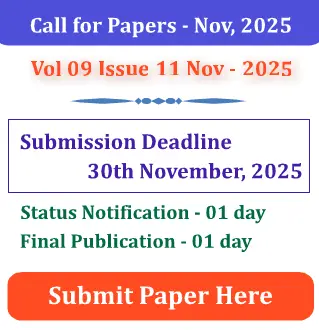Integrated Water Resource Management and Analysis on Wardha River Basin
Ajinkya G. Khande , Shubham S. Bankar, Pritesh V. Mahale, Tushar B. Sable, Sanket Sangale, Prof. Rohit Deshmukh
DR. D. Y. PATIL INSTITUTE OF ENGINEERING MANAGEMENT AND RESEARCH, AKURDI.
DEPARTMENT OF CIVIL ENGINEERING
Abstract:
This investigation of the IWRM technique in Wardha has combined the qualitative content analysis of the secondary sources. Because the frame is based on the 4 Dublin principles, the 3 E's principles, and the 3 orders of the IWRM model, it is necessary to compare the present water operation practise in Wardha to the fashionable practise of IWRM in order to satisfy the purpose of this exploration. The results show that the existing IWRM strategy in Wardha satisfies this order with a high standard in the enabling terrain order, one of the three orders of the IWRM model based on the theoretical evidence. This indicates that Wardha can support the IWRM model's enabling terrain order by executing well-designated swash receptable a well-defined operation with enforced water-related laws and regulations. It is evidently seen that the existing institutional arrangement associated to water provides operating in Wardha is likewise in relatively acceptable condition when three out of the nine conditions in the IWRM model's institutional placements order are collectively analysed. However, the Wardha original government was unable to provide financial support on its own for the IWRM prosecution because the Wardha original government's financial support and resourcing with tone-fund is infrequently seen in the operation of Wardha's water coffers, and the procedure to assist with the political will and commitment is subpar. The IWRM model's operating instruments order is seen as having the lowest ranking in the evaluation on a public scale. This coexists with the reality of operational shortcomings in the Wardha IWRM prosecution. These data suggest that this is due to a lesser cost recovery strategy and a poorer monitoring and evaluation system at the public level. This indicates that in order for the IWRM approach to be successfully implemented in Wardha, emphasis must be placed on the operational tools and institutional settings. The experimenter comments that if the public has equal access to the hydrological data provided in accordance with social equity standards and the community has opportunities to provide formative input, the approach of IWRM implementation in Wardha will be more successful.







